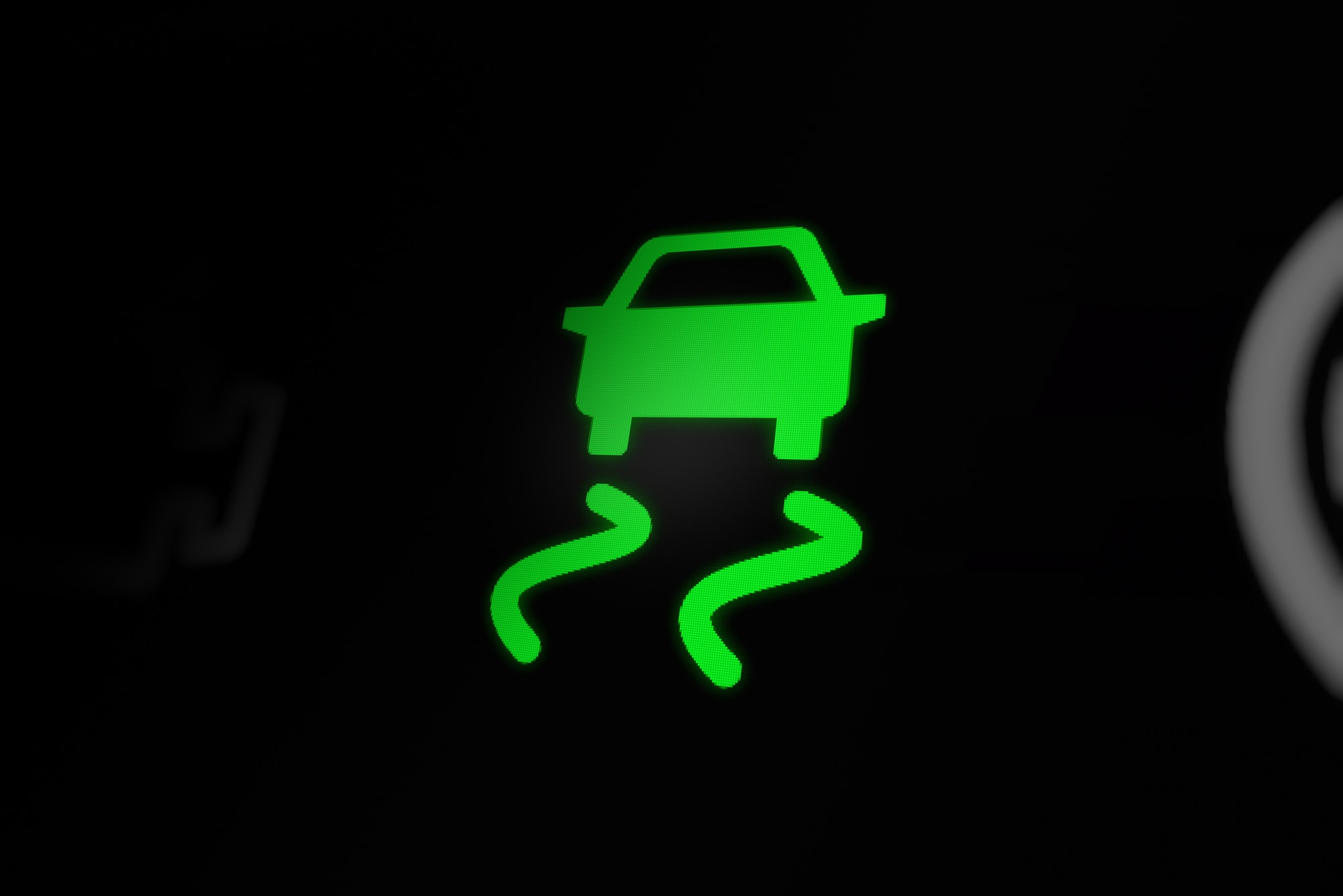How Does Electronic Stability Control Work?
You've seen the button, but how does that actually work? We explain.
 Shutterstock
Shutterstock
Electronic stability control. You may have heard the term, seen the push button icon in your car, but do you know what it means or how electronic stability control assists your experience as a driver?
What is Electronic Stability Control?
Simply put, Electronic Stability Control is a system of sensors and stabilization technology designed to assist the driver and modify undesired behaviors in a vehicle. If your vehicle starts to slide, skid, or lose traction, then the system steps in to do its best to keep the car moving in the direction the driver intends.
How Does Electronic Stability Control Work?
When activated, the stability control system continuously monitors driver input and vehicle responses. It determines which steps are needed to prevent and stop skids, and maintain stability. These steps include:
- Actively and independently applying power to the brakes and wheels
- Centralizing vehicle control
- Suppressing engine torque and/or reducing the vehicle's speed
These actions can allow a vehicle to regain traction on a wet road, keep a car from spinning out of control in a corner, or accelerate onto a snow-covered street without too much wheelspin. It can't do the impossible, but electronic stability control often helps drivers maintain control over their vehicles when conditions become problematic.
Who Created Electronic Stability Control and When?
Created by Bosch Mobility with the original patent secured by Mercedes-Benz Safety Engineer Frank Werner-Mohr in the early-90s, Electronic Stability Control is based on the technology of the gyroscope. Werner-Mohr personally saw the impact of single passenger crashes due to vehicle mishandling and driver error. He took his training as a test driver and engineer and channeled it into creating a driver-assistance system that saved millions of lives since.
First implemented in luxury vehicles by Mercedes-Benz and BMW, the safety technology was picked up as standard by almost every major manufacturer on the planet. Also like most things in automotive, different brands name similar technologies by different names. Some brands call this safety system ESP, for Electronic Stability Programming, others call it by other names like Stabilitrak at GM, AdvanceTrac at Ford, Vehicle Stability Control at Toyota, Porsche, and several others.
Can You Turn it Off... and Why Would You?
Absolutely — it should be noted that there are many auto lovers and off-roaders that turn it off as a matter of habit. This is so they can control their vehicles without the supervisory input of the vehicle's safety and driver-assistance technology.
In situations that naturally have almost no traction, sometimes spinning the wheels for a longer period of time is what's needed. Think about being stuck in the snow, sand, or mud. In these situations, slow-and-steady isn't often the best solution, and you often need to spin the tires quickly to get unstuck.
How Do I Turn it Off?
In newer model cars, simply press and hold the ESP/ESC icon button until it switches off. For older model vehicles and vehicles that have auto-lock braking systems built in, you will have to unplug the sensors to bypass the safety technology, which isn't something we recommend doing. On some models, pressing the button only partially disables the system, so consult your owners manual for more specific instructions.
Written by humans.
Edited by humans.
 Teia Collier
Teia CollierNative Texan with a love for people, auto, beautiful design and a grand adventure, Teia Collier is an award-winning writer based in the Dallas area. With a background in education, civic service, and public policy, she loves to discover the why behind a thing and to connect people with the best resources to make their lives better. Collier is also a mom of three, addicted to coffee, and the incoming president of the Texas Auto Writers Association.
Related articles
View more related articles